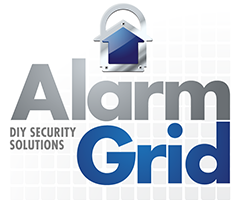How Do I Add a 4193SN to My VISTA-128BPT, 250BPT or VISTA-50?
The 4193SN is a 2-zone VPlex expander that allows the addition of 1 or 2 conventional devices to the polling loop. Loop 1 can be wired as Normally Closed, or it can use an End of Line Resistor to support Normally Open devices. Loop 2 is Normally Closed, and is only used for burglary devices.
- Determine if one or both loops of the 4193SN will be used. Loop 1 must be used, and can be used with an EOLR, or as a Normally Closed zone. When Loop 1 is used, Loop 2 can also be used, and is always Normally Closed with no EOLR. This might come in handy when adding a door or a window to Loop 2 in the same vicinity as a heat detector, connected to Loop 1.
- Determine if Loop 1 will use the EOLR, or be wired Normally Closed with no resistor. Wire the zone accordingly. Fire zones are Normally Open, and would require the use of the End of Line Resistor. Burglary zones may be Normally Open, or Normally Closed, and wiring a resistor at the end of line makes the zone wiring more secure by supervising it for open or short conditions.
- Choose your wiring. The gauge of the wire, whether the wire is shielded or unshielded, the length of the run, and the total current draw from all devices connected to that loop or run need to be considered. For example, multiple 4193SNs wired to a single loop might require a heavier gauge wire. The proper gauged wire can be determined by following the Polling Loop Wire specification chart.
- Program the 4193SN to the panel. The 4193SN can be added to the panel via keypad programming or by accessing the panel's programming by your alarm monitoring company through the Compass software. For those doing it themselves, keypad programming the 4193SN to the panel will be quick and painless.
- Install the 4193SN to the panel. Simply make the right wiring connections to terminals 24 and 25, and make the proper wiring connections to the input loop. If you need more help the 4193SN installation instructions will give you a more in-depth description of installing this piece of equipment.
-
Test operation. If monitored, be sure the system is on test to avoid a dispatch. You can put your system on test by calling your central station and asking for them to put the system on test for a specified period of time. You'll need your passcode for this. The passcode is the word/number/phrase that you use to tell the operator not to dispatch the police. to confirm that the alarm signal was caused by a person who is authorized to be on the premise.
If this is a burglary zone, open or fault the zone. It should show a fault on the keypad. Now, close or restore the zone. The fault should disappear from the keypad. If this is a fire zone, follow the instructions provided with the device for testing. Generally fire zones will have a test button or require the administration of canned smoke. We strongly recommend following the manufacturers recommendation for testing your life safety equipment.
Vista-50, Vista-128BPT, and Vista-250BPT panels achieve hardwire zone expansion through the use of a polling loop, also called a VPlex (vee-plex) loop. The Vplex loop provides both power and data via 2 wires to the devices connected through it. Either a special type of device, or an expansion module, which allows conventional contacts to communicate their status to the alarm panel, is required. The 4193SN is one example of an expansion device.
Below, you will see an image and a line drawing of the 4193SN. On one side is a black and a red wire, which connect to the alarm panel on the polling loop terminals. On the other side are the zone wires. In the middle, inside shrink-wrap, is a tiny printed circuit board. Each 4193SN has a serial number assigned, which is programmed into the alarm panel using Input Type 06 (serial number polling). Each of the inputs has a loop number, known as Loops 1 and 2. Loop 1 can be configured to use an End of Line Resistor, or (EOLR), which allows for a Normally Open (resistor in parallel), or a Normally Closed (resistor in series) configuration using the white and black wires. If no resistor is desired, Loop 1 can also be wired Normally Closed, using the yellow and black wires. One or the other can be used, but not both. When Loop 1 is used in either configuration, then Loop 2 can also be used (Loop 2 cannot be used by itself). Loop 2 is always Normally Closed, and uses the green and black wires.
The 4193SN can be used to add conventional devices, such as magnetic door and window contacts, heat detectors, pull stations, conventional (4-wire) motion and glass break detectors. There are also special versions of these types of devices which have the VPlex technology built-in, and don't require the 4193SN. Specialized devices can be easily identified, they will have the letters SN in their model number, and will require only 2 wires. Some examples of specialized devices are the 4939SN (serialized Surface Mount Door Contact), FG1625SN (serialized Glass Break Detector), and the IS2500SN (serialized PIR Motion Detector).

Did you find this answer useful?
We offer alarm monitoring as low as $10 / month
Click Here to Learn MoreRelated Products
Related Categories
- Wired Alarm Control Panels
- Wired Security Systems
- Wired Door & Window Alarm Contacts
- Wired Smoke Detectors
- DIY Wired Security Systems
- Wired Motion Detecting Sensors
- Wired Glass Break Detectors
- Wired Garage Door Alarm Sensors
- Answered
- Answered By
- Julia Ross






